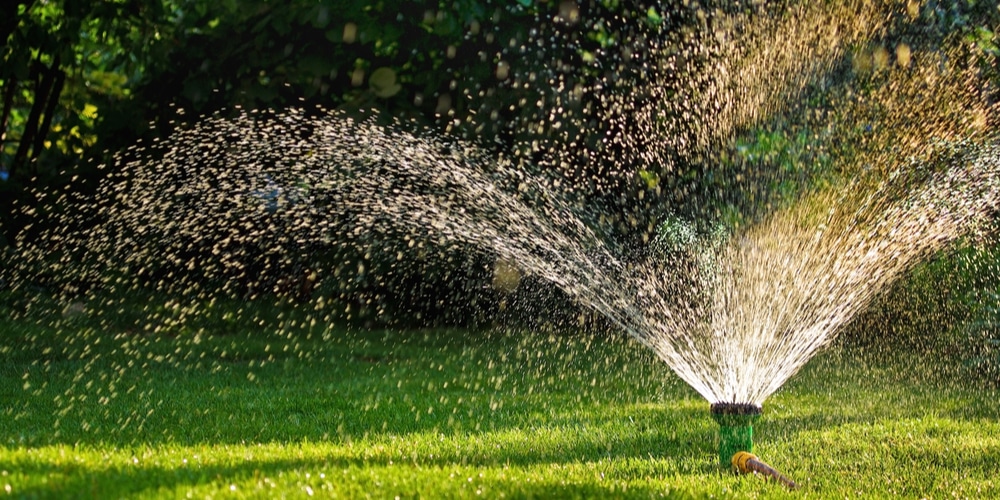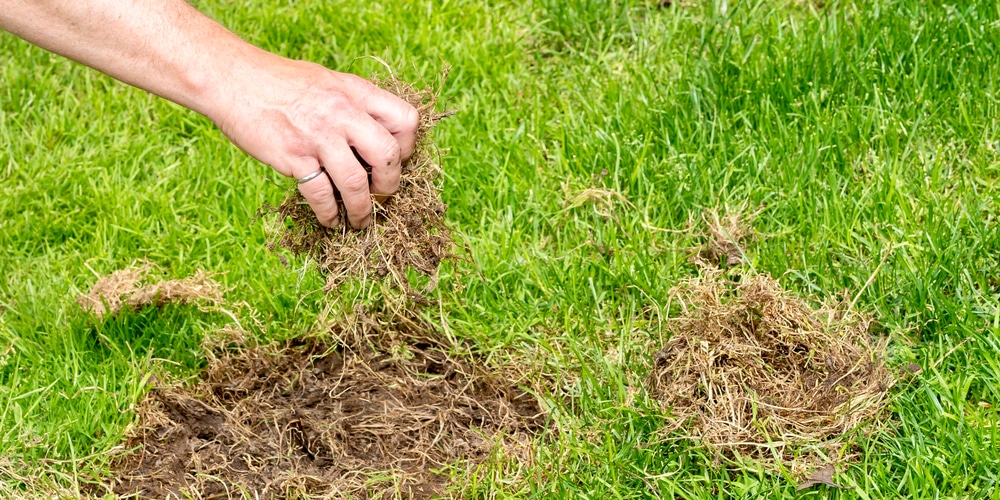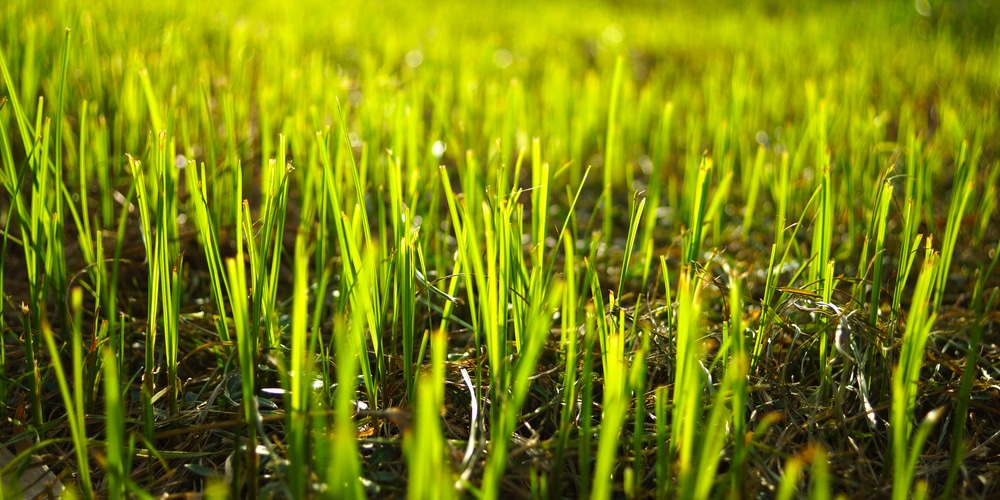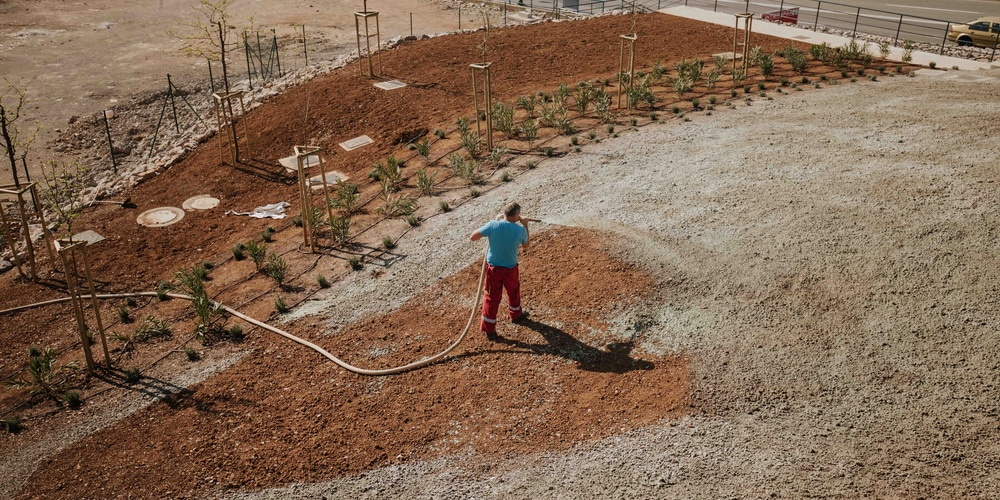St. Augustine is generally considered a tough variety of grass that thrives in warm and temperate climates. It’s a warm-season grass that is drought-tolerant and able to grow well in most soil types.
There are many situations where St. Augustine lawns will suffer. If the climate’s too cold, your lawn has insufficient light, or a high footfall, you may notice that your lawn has become brown and patchy. The good news is that there are a few ways you can revive dead St. Augustine grass. Let’s look at how to restore your lawn to its former glory.
Reviving St Augustine Grass
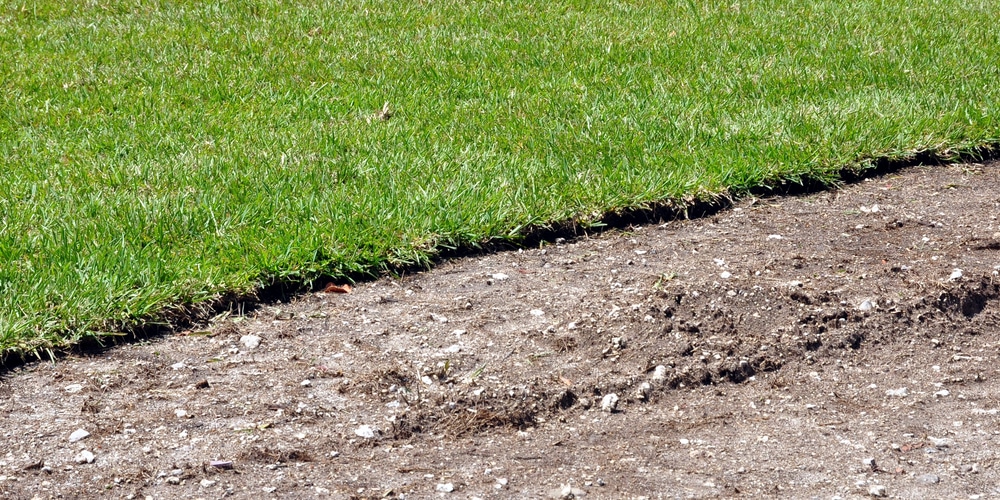
If your St. Augustine lawn looks brown, it may either be dead, dying, or going through a dormant phase. If your grass looks dead, you may still be able to revive it as long as you act fast. Once it’s totally dead, you’ll need to plant new grass seeds or lay new sod. You’ll generally have about five weeks to revive brown grass before your lawn becomes unsalvageable.
Before attempting to revive your lawn, you’ll need to check whether or not the grass is dead. Try gently pulling on your grass. If you can easily pull up the grass, this means it’s dead, and you’ll need to reseed or lay new sod. Before applying new sod, you may like to access why your lawn has died. Perhaps there’s a better variety of grass that will survive your climate?
If you found it hard to pull up the grass in your lawn, this means that its roots are still alive, and you’ll be able to revive the grass. Here are some steps which will help you achieve a healthy green lawn:
1. Water Your Lawn
The first thing you should do if you notice your St. Augustine lawn is dying is to look at your watering schedules. Are you underwatering or overwatering your grass or sod? Too much or too little water will affect how your grass grows and how healthy it looks. St Augustine grass should generally be watered two or three times a week. You may need to increase your watering to three times a week, as watering your lawns deeply can help to revive the grass.
It’s recommended that you water to a depth of between ¾ and 1½ inches. Continue providing your lawn with extra water for about a month until its condition improves. St Augustine grass should begin to thicken up and turn green after rigorous watering.
If your lawn has already died due to drought, it won’t grow back, no matter how much water you provide. If you live in an area prone to drought, you may like to reseed using Bermuda grass, a robust, drought-resistant variety.
2. Remove Thatch from Your Lawn
If your St. Augustine lawn has accumulated a layer of thatch on the surface, it will affect the grass’s health. Thatch blocks sunlight, water, and air from your grass and causes issues such as insects or fungal diseases.
If you notice thatch on your lawn, you’ll need to de-thatch using a rake. Dethatching will allow your grassroots to receive more nutrients, will improve the soil aeration, and allow sunlight to get to the blades of grass.
3. Improve Your Soil Quality
St. Augustine grass does best if it’s grown on well-drained soil, which is nutrient-dense. If your grass keeps dying, it may be a good idea to check your soil quality. You can do a pH soil test to determine whether your soil is deficient in any essential nutrients. This will help you decide which type of fertilizer to use on your lawn. Milorganite is good for St. Augustine.
You can also check whether there’s enough soil volume to support your grasses root development. It may be a good idea to add nutritious topsoil to your lawn which is rich in humus. This will improve the health of your St. Augustine grass and give it a better chance of survival.
4. Overseeding Your Lawn
If you are left with patchy areas in your lawn, you can overseed by sprinkling new grass seeds in the bare areas. Before sowing the seed, you should rake the soil to loosen it so that the seeds can take hold and establish their roots. Grass won’t be able to grow in compacted soil. Here’s our full guide to overseeding a lawn.
5. Reseeding your lawn
If your dead St. Augustine grass has completely died and can’t be revived, you’ll need to start again and reseed your lawn or lay new sod. Before replanting, you should ensure that your soil has the correct pH range by carrying out a soil test. The pH should be between 5 and 8 for the grass to grow healthily.
Before reseeding or laying your turf, you can till the soil to a depth of four inches. This will loosen up any compacted soil and improve the permeability of your lawn. You can then add a layer of compost to your lawn. Compost is natural and sustainable and will help add nutrients to your soil. If you add an inch of compost, you won’t need to use fertilizer.
Before planting your grass, seed, or laying new sod, you should remove any debris from the soil and flatten out any bumps or hollow areas. After planting grass seeds, cover them with ⅛ inches of soil to stop the birds or wind from affecting the seeds. You can then water the seeds to help them germinate. It’s also a good idea to keep children and pets off newly seeded areas and newly laid sod until your lawn has established itself.
Conclusion: How to Revive Dead St. Augustine Grass
If you have a St. Augustine lawn, you’ll need to regularly water, mow and aerate it to ensure it continues to thrive. Luckily there are ways that you can revive your lawn if it starts to die. It’s best to prevent your lawn from dying by checking to see if it’s growing properly. Good lawn care will allow you to have a healthy, green yard that your family can enjoy for years to come.
